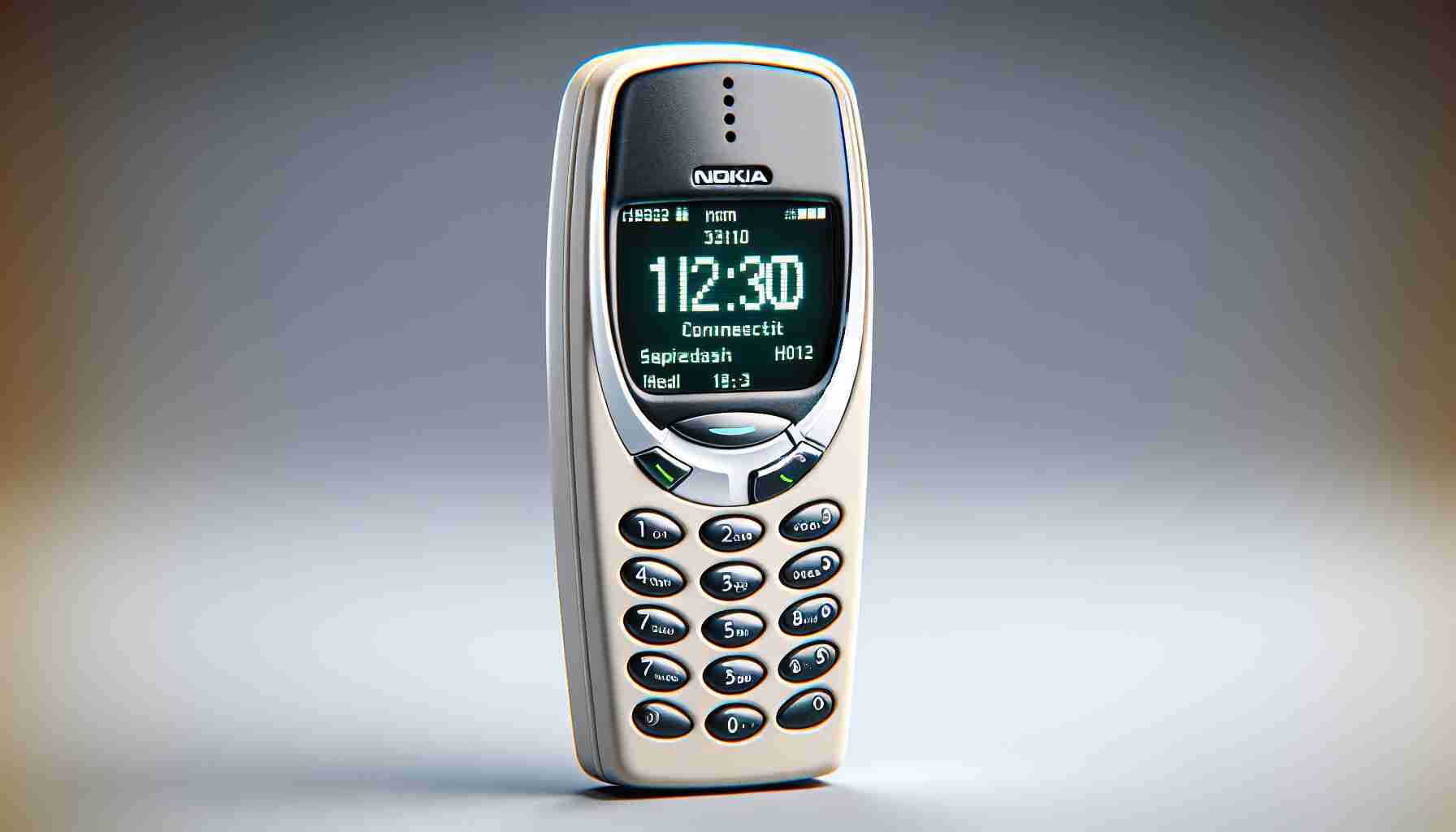A nostalgic yet functional handset is hitting the market, signaling a tribute to the past with the revival of the iconic Nokia 3210. The reinvented device, released by HMD to commemorate its 25th anniversary, offers a quaint blend of retro design and contemporary features. The phone has undergone a transformation while paying homage to its roots from 1999.
The upgraded model boasts a compact 2.4-inch QVGA screen, catering to basic viewing needs with crisp clarity. Photography enthusiasts can enjoy capturing moments with the incorporated 2MP rear camera, complete with a practical flash for low-light conditions.
In step with current technology, the new iteration presents advanced 4G LTE support for smooth connectivity on the go. Wireless communication is further made easy with the integration of Bluetooth 5.0 and a convenient USB-C port for efficient charging and data transfer.
The reimagined Nokia 3210 has not forgotten the essentials, featuring dual-SIM slots for versatile phone number management and a return of the ever-popular Snake game for endless entertainment. Longevity is assured with a removable 1,450mAh battery, promising up to 9.8 hours of conversation on a single charge.
Priced at an accessible £75, this revived classic presents an affordable alternative to high-end smartphones. It comes in three distinct shades: Y2K Gold, Scuba Blue, and Grunge Black, each offering a splash of personality to the durable design.
The article discusses the release of a reimagined version of the Nokia 3210 by HMD to mark its 25th anniversary. Below are the most important questions, challenges or controversies, advantages, disadvantages, and related links to the topic.
Important Questions and Answers:
1. What is the purpose of reimagining classic phones like the Nokia 3210?
The trend to reimagine classic phones serves a dual purpose: to tap into nostalgia for older devices and to provide simpler, more affordable alternatives for those who do not require the full functionality of modern smartphones.
2. How does the new Nokia 3210 balance modern connectivity with its classic design?
The new iteration retains the essential physical design cues from the original device but incorporates modern features like 4G LTE support, Bluetooth 5.0, and a USB-C port. This allows users to enjoy faster connectivity and modern conveniences while appreciating the classic design.
Key Challenges or Controversies:
– Market Competition: The modern cellphone market is dominated by smartphones, and the reimagined Nokia 3210 must compete with a variety of devices that offer extensive app ecosystems and advanced features.
– Consumer Perception: There might be a challenge in convincing younger generations, who have not experienced the original 3210, of the value of a simpler device in this age dominated by smartphones.
Advantages:
– Nostalgic Appeal: It attracts those who desire a trip down memory lane.
– Battery Life: Simpler phones typically have longer battery life compared to modern smartphones.
– Cost: At £75, it is much more affordable than modern smartphones, making it accessible to more people or as a second device for digital detoxing.
Disadvantages:
– Limited Functionality: It cannot run modern apps or handle tasks beyond basic calling, texting, and the occasional photo.
– Camera Quality: The 2MP camera cannot compete with the cameras on modern smartphones.
– Screen Size: The 2.4-inch screen is significantly smaller than modern smartphones, limiting its use for media consumption.
Related Links:
– HMD Global: While I cannot generate new links or ensure the validity of external web pages, you can generally find information about HMD and its range of Nokia phones by visiting the Nokia or HMD Global main website (name of the website without a direct link).
Please note that the discussion above focuses on general information around the topic, as no specific URL or link was provided for more targeted follow-up.
